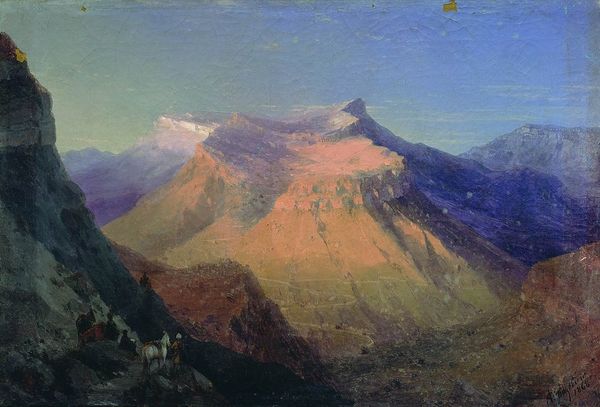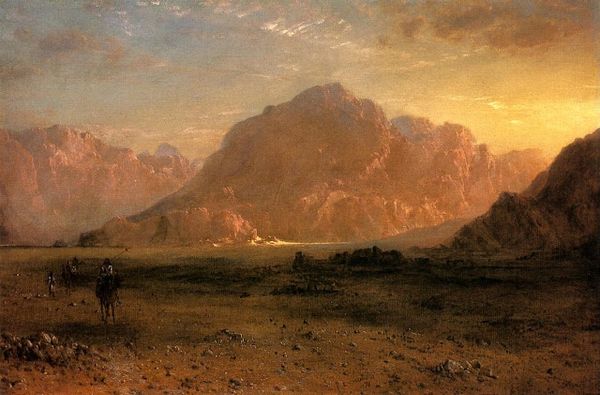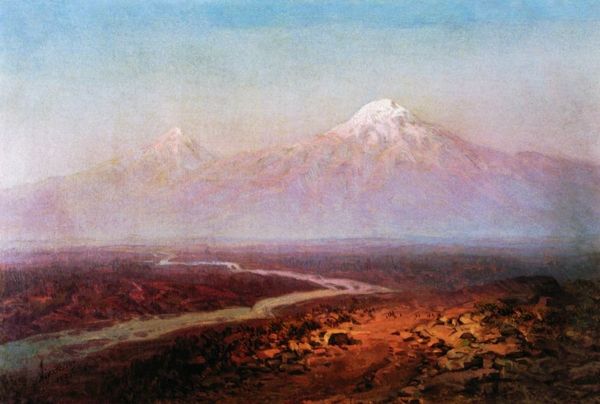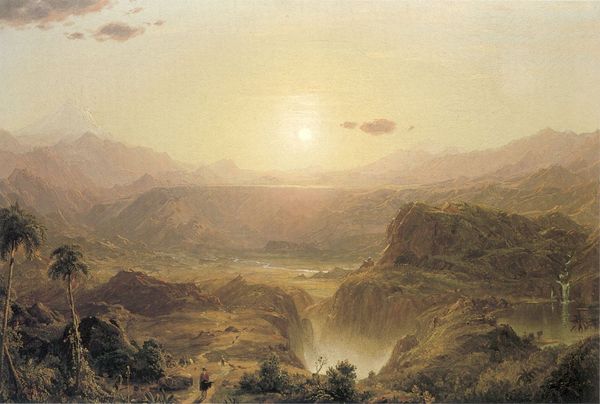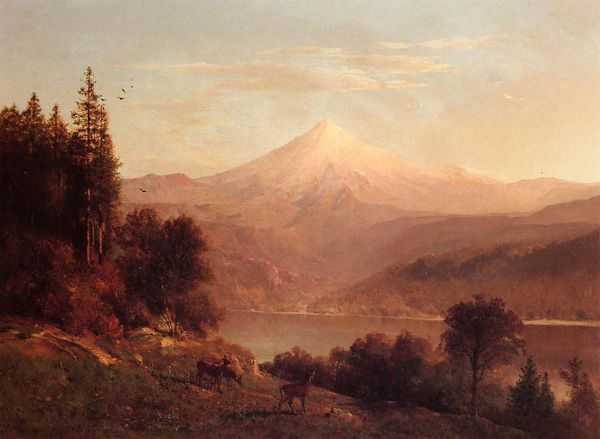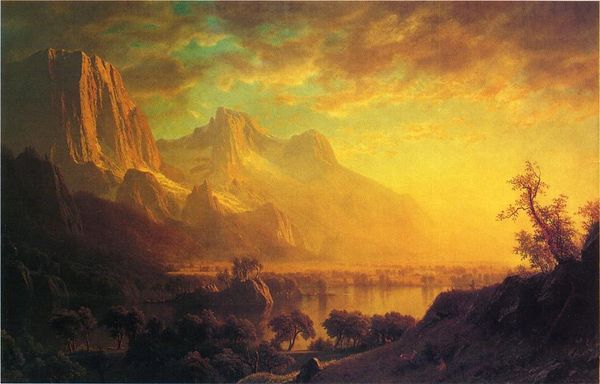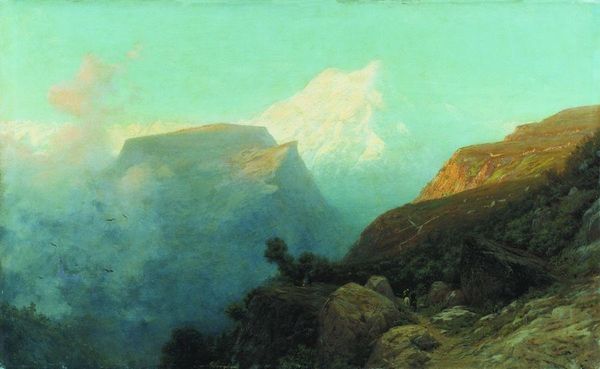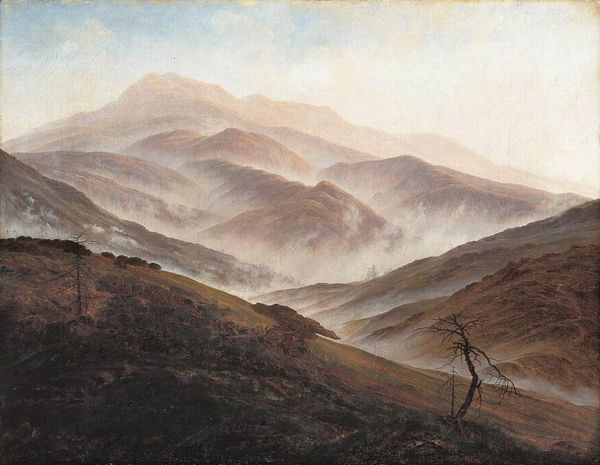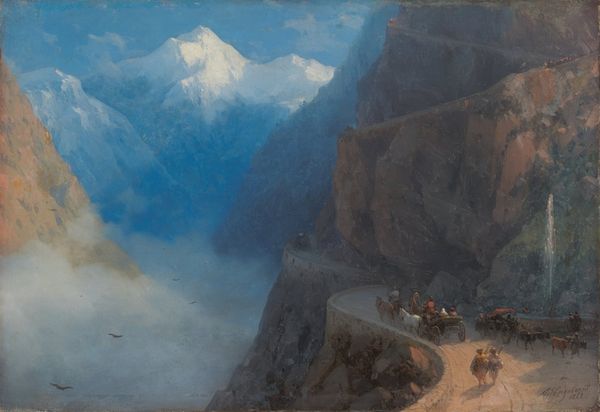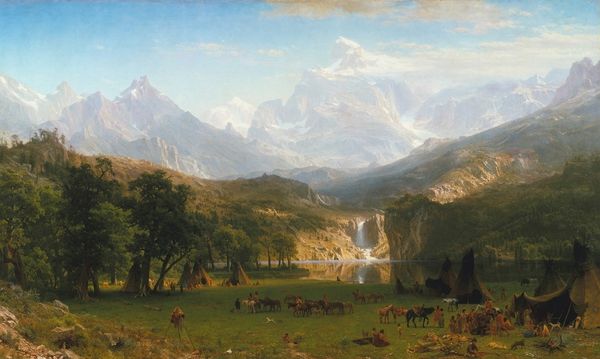
Dimensions: 102 x 132 cm
Copyright: Public domain
Editor: This is "Mountain Village Gunib in Daghestan View from the East," an 1869 oil painting by Ivan Konstantinovich Aivazovsky. The scale is impressive, and the light makes the mountains seem to glow. How would you interpret this work in the context of its time? Curator: Well, looking at it through a historical lens, we have to remember the Russian Empire's expansion into the Caucasus in the 19th century. Aivazovsky, though celebrated, was also painting during a period of intense colonial activity. Does this landscape aestheticize and perhaps even legitimize that expansion? Editor: That's a really interesting point. I hadn't considered that the romantic depiction could have a political undertone. Curator: Exactly. The sublime mountain vista can serve a dual purpose. On one hand, it reflects a Romantic fascination with nature, but it simultaneously asserts a claim to territory, projecting power through ownership of the landscape. Consider, too, the figures in the foreground—who are they and what's their relationship to the land being "discovered"? Editor: I see what you mean. It makes you question the role of art in shaping perceptions of places and cultures. Curator: Precisely! And where do we encounter works like this? Primarily in museums, which themselves are institutions deeply rooted in colonial history and the construction of national identity. Think about who is doing the looking, and who benefits from this representation of Daghestan. Editor: That's a powerful way to look at it. I will consider it more broadly next time. Curator: It certainly gives a new dimension to appreciating landscape painting, doesn’t it? Editor: Absolutely. I am not sure I will ever look at landscapes the same again! Thanks for the insights!
Comments
No comments
Be the first to comment and join the conversation on the ultimate creative platform.
